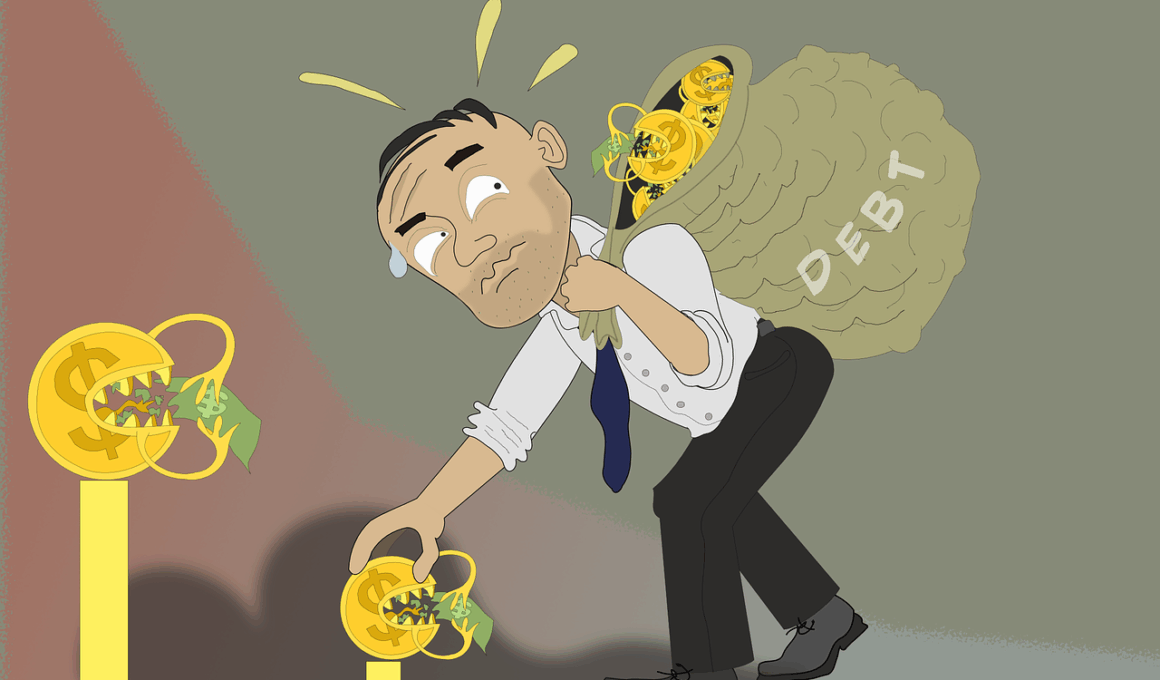How to Create a Debt Reduction Plan That Works for You
Your journey to financial freedom begins with creating a well-structured debt reduction plan. Start by assessing your overall financial situation. Calculate the total debt amount you owe, including credit cards, personal loans, and mortgages. Understanding your debt gives you a complete picture of your financial landscape. Next, evaluate your income and expenses to determine how much you can allocate toward debt repayments. It’s essential to create a budget that allows you to cover your living expenses while still contributing to your debt reduction. Then, prioritize your debts based on interest rates, balances, and urgency. It’s wise to focus on high-interest debts first as they cost you more over time. Make a list of debts starting from the highest to the lowest and consider using strategies like the snowball method or avalanche method for repayment. Establish a timeline for your debt reduction goals, as setting specific deadlines keeps you accountable and motivated. Finally, regularly review your progress and adjust your plan accordingly to stay on track. Above all, remember to celebrate small victories along the way.
Debt can feel overwhelming, but setting up a well-planned debt reduction strategy can empower you to take control. To make your debt reduction plan more effective, consider automating your payments. This ensures you never miss a payment, which helps avoid late fees and further interest. Additionally, explore potential ways to increase your income. Side jobs, freelance work, or selling unneeded items can generate much-needed extra cash for paying down debt. It’s also essential to cultivate a frugal lifestyle while you are executing your plan. Look for ways to cut unnecessary expenses, such as dining out less or canceling unused subscriptions, and redirect those funds to your debt payments. Communicating with creditors can also be beneficial; many offer hardship programs or could potentially lower your interest rates. Negotiating can ease your repayment journey. As you implement your plan, track your progress using financial apps or spreadsheets. Celebrate your achievements, regardless of how small they may seem. This approach keeps you motivated and shows that your efforts are leading to real progress. Stay focused, and your hard work will pay off in the long run.
Understanding Debt Reduction Strategies
Implementing effective debt reduction strategies is key to successfully managing your finances. One popular method is the “debt snowball” approach, which encourages you to pay off your smallest debts first. This strategy can build positively on your momentum, as paying off smaller debts provides psychological rewards. Conversely, the “debt avalanche” method focuses on paying off debts with the highest interest rates first. This method minimizes the total interest paid over time, saving you money in the long run. Choose the method that aligns best with your personality and financial situation. In addition, consider consolidating multiple debts into one loan with a lower interest rate. Debt consolidation can simplify payments while potentially lowering interest expenses. Another effective tactic is to negotiate lower interest rates with your current lenders. A phone call can lead to savings and reduce overall repayment amounts. Awareness of your credit score also plays a vital role in debt-reduction strategies. Maintaining a good score will help you secure better loan options and interest rates in the future. Take proactive steps to monitor and improve your credit score as you work through your debt reduction journey.
In addition to the strategies mentioned, developing a solid emotional and mental commitment to debt reduction is necessary. Staying motivated through the process can often be challenging. Creating a vision board or setting specific financial goals can help visualize your success. This board can contain images or quotes that inspire you to stick with your plan. Surrounding yourself with a supportive network of friends or family members can also keep you encouraged throughout the journey to financial freedom. Sharing your progress and challenges can provide valuable perspectives and insights that could help refine your approach. Regular reflection on your spending habits will also equip you to make wiser decisions in the future. Consider joining online groups or communities focused on debt reduction to connect with others experiencing similar challenges. Engaging and interacting with these groups can provide motivation and helpful insights. At times, evaluating your spending behavior can lead to better decisions and prevent new debt accumulation. When freedom from debt is finally achieved, be sure to adjust your financial habits accordingly to avoid falling back into old patterns.
Staying Committed to Your Debt Reduction Plan
Staying committed to your debt reduction plan is crucial for long-term success. Overcoming setbacks or emotional hurdles can be tough. If unexpected expenses arise, re-evaluate your budget to see if any adjustments are necessary. It’s important to stay flexible while still remaining dedicated to your goals. Check in with your progress at least once a month to assess your situation. Celebrate milestones, big or small, to boost your confidence and motivation. This will reinforce the positive habits you’re building and the lifestyle changes you’re making. Remember, this journey is about progress, not perfection; don’t dwell on minor setbacks. Instead, treat them as opportunities to learn and grow. If moments of discouragement arise, reflect on the reasons behind your debt reduction efforts and keep your vision clear. Consider setting stop-loss rules for your finances as an added measure to prevent slipping back into debt. As you see tangible results of your efforts, the sense of achievement will energize you and inspire you to keep pushing forward. Cultivating a mindset of positivity and resilience is fundamental in achieving your financial goals.
In conclusion, creating a debt reduction plan requires careful planning and commitment. It’s essential to take the time necessary to analyze each aspect of your financial situation fully. Understanding both your income sources and spending habits can motivate you to stick to your plan. Always be proactive by seeking out resources, guidance, and potential assistance programs available for those struggling with debt. Financial education, along with support from friends and connections, can aid significantly in staying on the path to financial freedom. Additionally, developing good spending habits during your debt reduction journey will reinforce your financial literacy and promote sustainability. Once debts are eliminated, maintaining a budget will help avoid future financial difficulties. Practice self-discipline and keep evaluating your needs versus desires to prevent falling back into the cycle of debt. Embrace this process and remain focused on long-term financial health. With determination, your ambitions of debt-free living are within reach. In time, you will experience the freedom that comes with debt reduction. Begin today by taking the first steps towards managing and reducing your debts.
Lastly, remember that everyone’s journey toward debt reduction is unique, and what works for someone else may not work for you. Therefore, tailor your debt reduction plan according to your lifestyle and financial circumstances. Track your progress through consistent review and recalibration of your goals. Surround yourself with support systems that uplift and encourage you when challenges arise. An important part of staying committed is having patience, as debt reduction is often a gradual process rather than an overnight solution. Stay engaged with various financial literacy resources, as continued education empowers your decision-making. Building a strong foundation for your financial future requires dedication to developing good money habits. When in doubt, consider consulting with a financial advisor to help you craft a personalized strategy. Each step taken toward reducing debt brings you closer to achieving your financial freedom goals. Recognize that a debt-free life not only positively impacts your wallet but also fosters peace of mind. By changing your mindset regarding finances and focusing on long-term benefits, you can reshape your future. Take the leap, and start your debt reduction journey today!
Once you’ve successfully managed to reduce or eliminate debt, consider ways to leverage your newfound financial freedom in a responsible manner. Establish an emergency savings fund to be secure against future unexpected expenses. Financial stability allows for better opportunities to invest in personal growth or save for important life events, like purchasing a home or funding education. Learn to differentiate between needs and wants while maintaining a mindful mindset regarding expenditures. Regularly review your financial goals, ensuring they align with your life plans, to remain purposeful and efficient in your financial decisions. Discuss your progress with peers and share experiences in a community group centered around financial health. Building connections with others on a similar path reinforces positive outcomes and keeps motivation high. Continuous growth in financial literacy keeps you informed of changes in the economy and personal finance strategies. Seek professional advice when contemplating significant financial changes or investments. Working with a financial planner can help you navigate complex situations. Ultimately, your debt reduction plan is just the beginning of a broader financial journey that promises freedom and a secure financial future. Carry the lessons learned forward, and empower yourself to continue thriving financially.


